Martin Wittfooth’s work uses the formal tools of baroque lighting (high lit shape advancing from deep shadow) and baroque compositional structure (energetic triangulation on the diagonal). Through the mastery of the baroque and indirect oil painting technique-the stacking of transparent glazes to achieve optical color mixture- Martin constructs surrealistic dystopian visions of an abrupt reintegration of exotic animal life into the ruins of industrialization.
What follows is an interview with the artist.
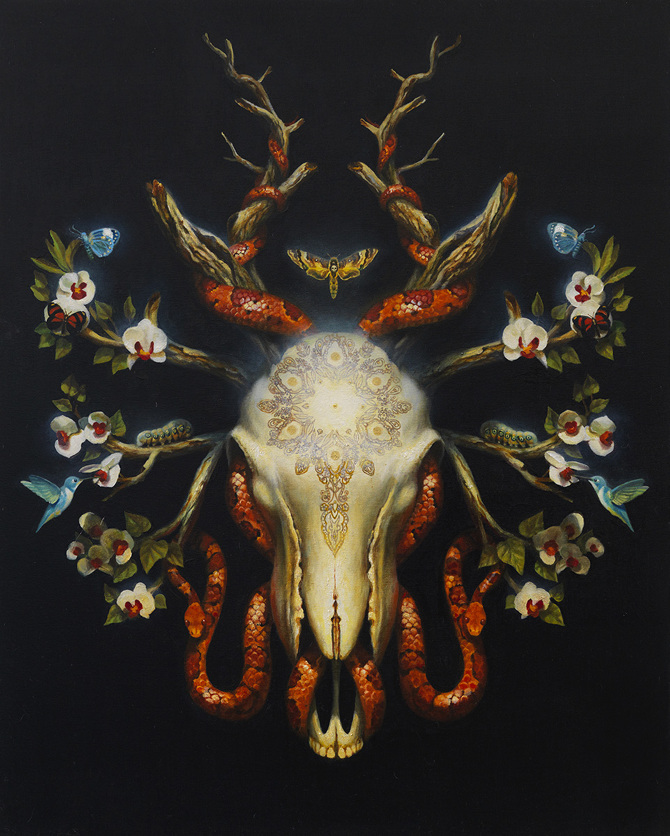
JH: How does the sacred influence your painting? I see visual parallels to Hindu and Catholic iconography, both embedded and explicit, but the holy space you create is occupied by nature, an inversion I consider both intelligent and subversive. Tell me your thoughts on this…
MW: The historical archive of our species is full of forgotten deities, gods and goddesses nobody prays to anymore, and of course some that have endured to modern times, often by systems of oppression, bloodshed, and gnashing of teeth. I happen to believe that all of this persistent yearning for a divine agency or higher power of whatever you want to call it has its roots in ancient practices of dialoguing with nature, by varying forms of shamanism, with what psychedelic philosopher Terence McKenna called “the felt presence of direct experience.” I realize that that may sound silly to some people, but I do think that there are ways by which one can alter one’s perspective or consciousness in such a way as to see nature itself (herself?) as a sacred entity, that the world we all emerge out of is far more interesting and worthy of our respect and I daresay worship than our species gives it credit for. This departure I think accounts for so much of the trouble that we find ourselves in, from the religious tensions across the world to the pandemic of depression seen in populations in “developed” parts of the globe, to the wanton abuse of the earth, our home. In my work I seek to bring attention back to nature as the sacred temple it needs to be treated as, not the junkyard we’ve reduced it to. To sum up the notion I’m trying to express in the work, I can quote Joni Mitchell’s song “Woodstock”:
“We are stardust
Billion year-old carbon
We are golden
Caught in the devil’s bargain
And we’ve got to get ourselves
Back to the garden.”
Amen.
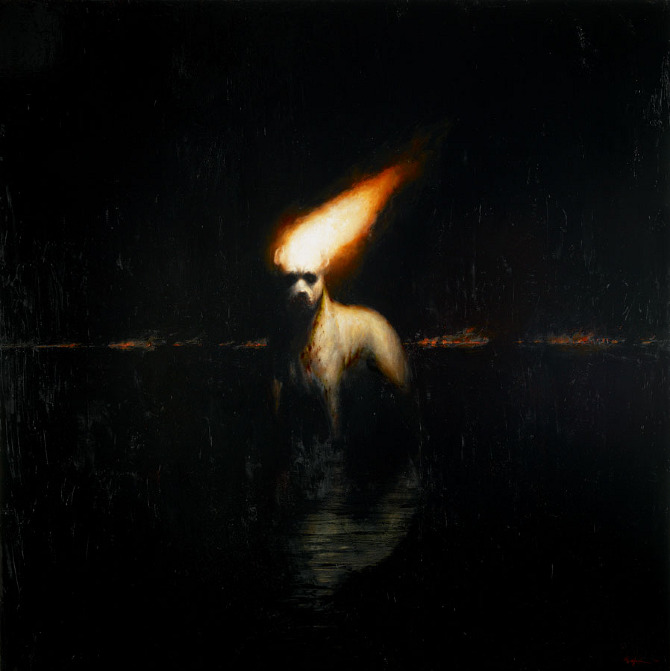
JH: There is a deep rare magic in wildlife, a magic which badly needs to be presented to the general public in the name of conservation, ecological health, and history. I think the expression of this is one facet of the success of your paintings. How do you define success, i.e, monetarily, educationally, painterly/formally, all, none, etc…?
MW: I would define success simply as the state of being in which one feels free, yet connected. What I mean by that is being free from any preset mode of thinking, liberated to express oneself as one pleases, yet also feeling a deep sense of connection (though not attachment) to the things one chooses to do during their life, and the people and beings one can share that life with. I think that overcoming challenges, facing obstacles rather than ignoring them or looking for shortcuts, is success. To me I feel a sense of success if I take on something that I might feel apprehensive or fearful about, and doing it anyway, and then realizing that not only could I do it but I could also learn something new in the process. To me, being open to always learn something is to be successful.
JH: We are experiencing a rapid human-caused mass extinction, a collapse of our ecosystem (we talked a little about the book The Sixth Extinction, which details industrialization’s desecration and destruction of the natural world). When the animals you paint so beautifully are gone, our children will only know their majesty through photography, film, video, and art. Your art, in the figurative and formal western tradition, will serve both as artistic and historical artifact, enlivened by the trace of essence of the animal life you manifest within each canvas. This is a big responsibility; how do you want your work remembered in the eyes of posterity?
MW: I think that art at all times through history has served the purpose of being a time-capsule for the future to look back at and get a sense of what was going on when it was made. In this way I think my work might be seen as some strange and subjective snapshot of some of these current issues and the worries surrounding them. There’s this old Chinese curse: “May you live in interesting times.” Our era is certainly an interesting one, and I want my work to reflect an aspect of that. That said I’m not making it for anyone in the future, but rather feel that it’s just a way for me to process these things on a personal level, though it’s an interesting notion to sometimes think about, that the work might be viewed at some later date when the world and its inhabitants are yet again in a different stage of transformation.
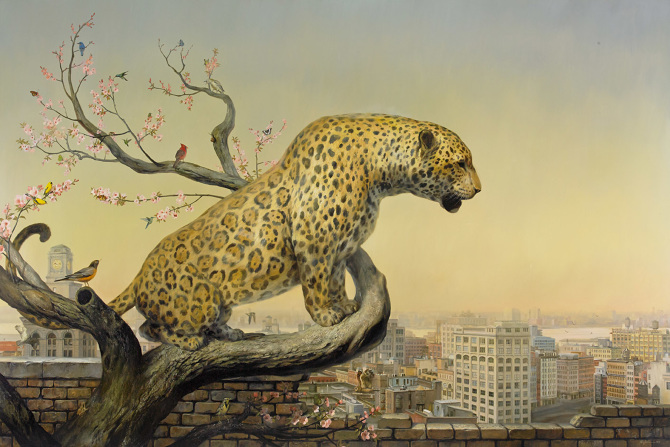
JH: Is it annoying to have your work considered through the lens of environmental activism (if so sorry)? Does that play an active role in your imagery, or are endangered animals just one tool for your visual language to speak through?
MW: It’s not annoying, and in fact I’d be flattered if it was considered that to some degree, as it would mean that the work reached people on a deeper level than simply wall decoration. I think that the greatest challenge of our time on this planet is to find our way back to an equilibrium and balance with it, and an area in which we need to do a great deal of work collectively is in our treatment of the natural world, which for quite a while now we’ve attempted to dominate and push to the margins. The subject matter I choose gets at this notion pretty regularly, though there are often other layers to the work than just a focus on environmental concerns. Much of my work also deals with the problematic human condition in a broader sense, not least of which is the suppression of our own consciousness: the wellspring of all the trouble to begin with.
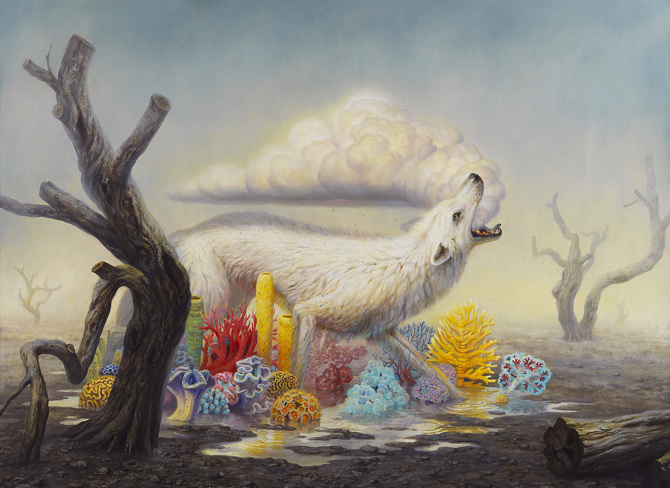
JH: What is your favorite memory or experience with nature/wild animal life? Is there a childhood happening that solidified your passion? Was your passion for wildlife (as mine was) informed through secondhand experience-zoos, pet stores, photos, books?
MW: I grew up on the southwestern coast of Finland, and would spend every summer of my childhood on an island in the Baltic Sea peninsula. There was so much for me to explore there as a kid, and I think it instilled in me a pretty significant appreciation for nature and the myriad ways in which it plays a kind of harmonized symphony with itself. A couple of decades later I tried some psychedelic mushrooms in a field surrounded by a forest, and let me just summarize by saying that I was profoundly reminded of the magic that I knew and felt so strongly as a child.
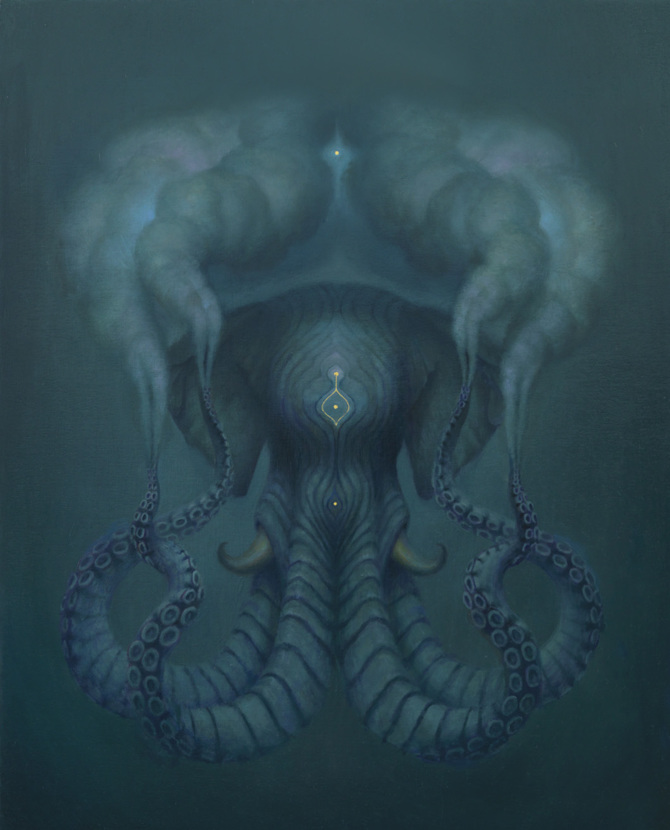
JH: What is your masterwork to date, your most successful painting?
MW: I don’t have a singular painting that I feel that way about, though one rare painting from 2014 that I’ve decided to keep in my own collection for some unexplainable reason that I feel strongly tied to is called “Incantation.” I painted it in my first year of living on my property near Woodstock in upstate New York, and in that time I started to develop a really strong connection to the land up here. Some of that feeling ultimately got trapped inside of that painting. People who see it tend to respond to it pretty favorably.
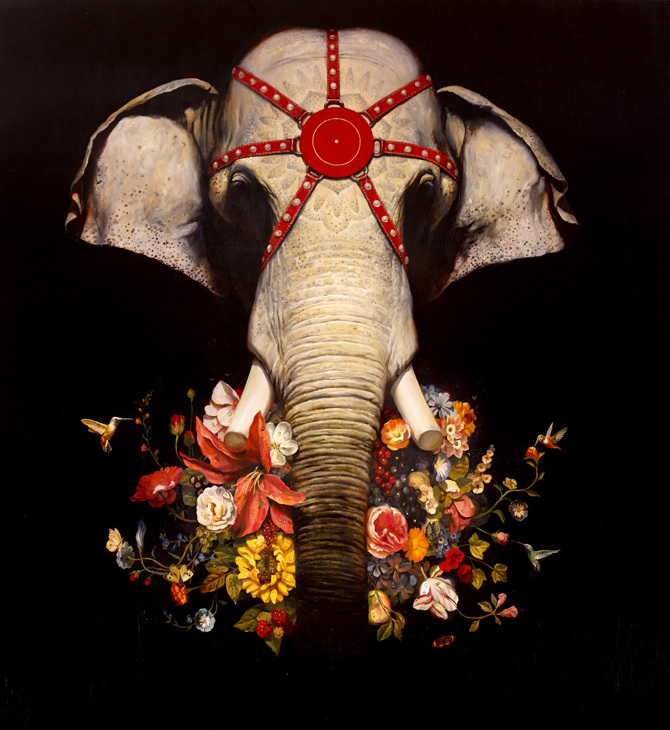
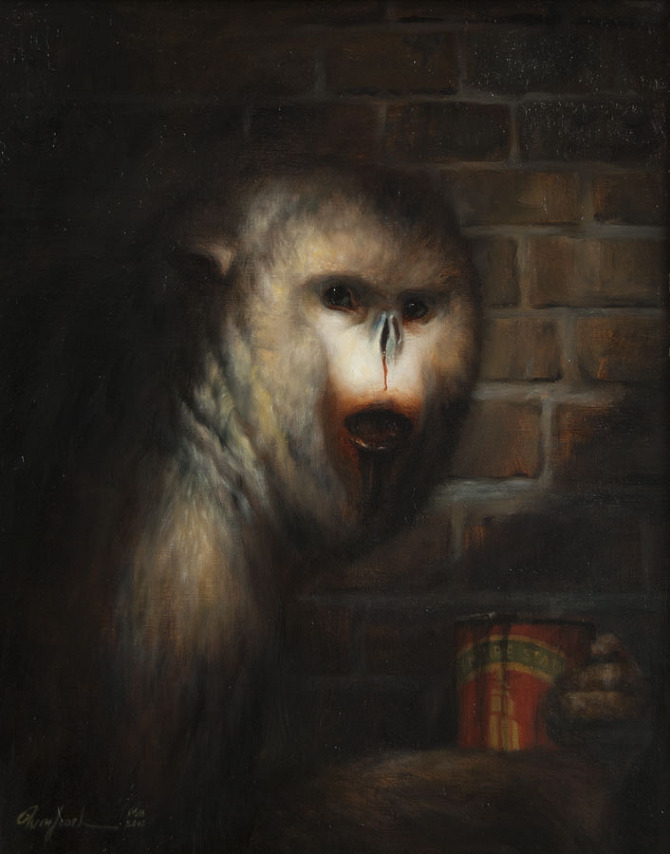
JH: What parts of art history do you most strongly identify with? I feel a lot of influence from the Baroque, magical realism, surrealism, Islamic geometric painting, Hindu iconography…
MW: In terms of painting technique, I think I get a lot of influence from the late Renaissance in Northern Europe, the Mannerists, and painters of the 19th Century. Though I can’t pinpoint a particular favorite, as I tend to look at artwork from all time periods and regions of the world pretty often. As someone who grew up in Europe and influenced by its artwork, I find it an interesting practice to borrow the look of classical European painting but to simultaneously weave in elements of Eastern and mystical symbolism and thus expand my own dialogue, in a time when cultures and ideas are incredibly fertile for cross-over.
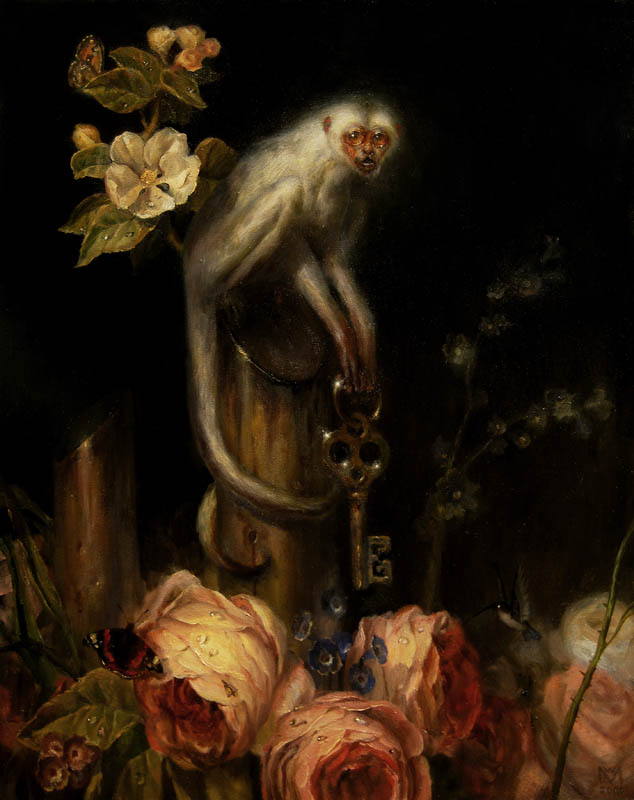
JH: Who are your favorite painters?
MW: The list is too long to put down here, but some that come to mind are Arnold Böcklin, Henry Raeburn, Jules Bastien-LePage, Jan Van Eyck, Robin Williams, Vincent Desiderio, Justin Mortimer, Christian Van Minnen, and Julie Heffernan.
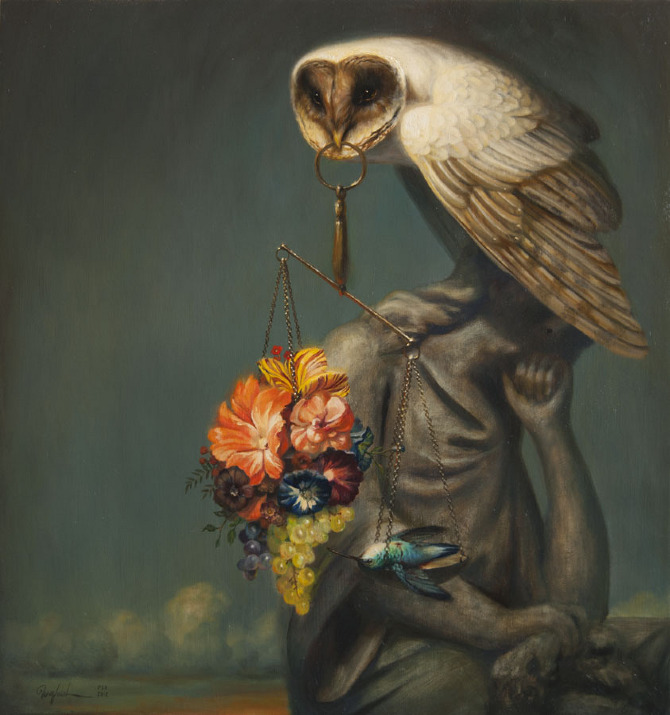
JH: Are there any upcoming or current exhibitions of your work you would like to share?
MW: I have a solo show opening in the Fall of this year at Corey Helford Gallery’s new gallery space in Los Angeles. In 2017 I will have my first major museum exhibition at the Long Beach Museum of Art in Long Beach, California in the Fall of 2017.
The painting, “Incantation,” that I mentioned above will be included in a large show curated by Hi-Fructose Magazine at the Virginia Museum of Contemporary Art, opening this May and running through to the end of the year.
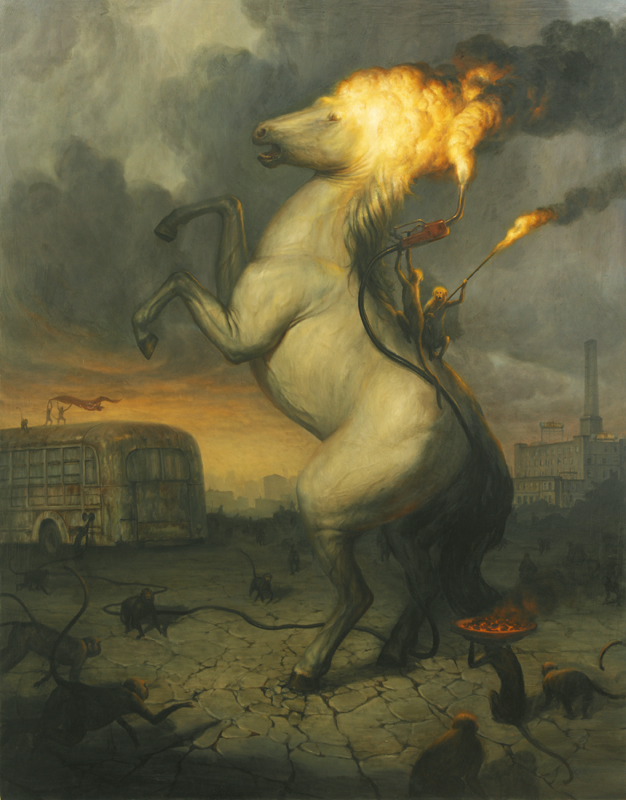


You must be logged in to post a comment.